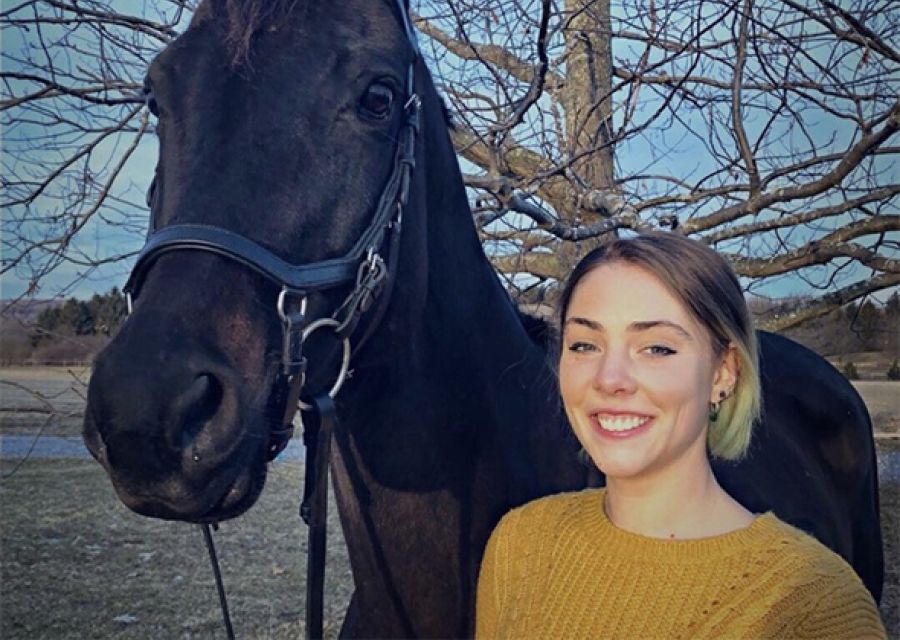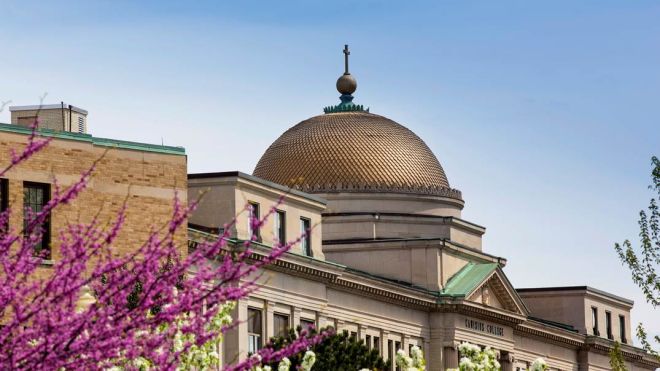
The idea of riding semi-wild horses for 650 miles across the rugged terrain of northeastern China, is a dream come true for Claire Taberski ’14. A life-long equestrian, Taberski will be among 40 participants in the 2020 Mongol Derby, a 10-day race across the Mongolian Steppe.
“I like to go a little rogue, and love riding horses I’ve never been on before,” says Taberski. “This is such an incredible feat of both physical and mental strength. I hope to prove to myself that I am capable of it with hard work and dedication.
Taberski, a dual major at Canisius in animal behavior, ecology and conservation (ABEC), and anthropology, was chosen from hundreds of international applicants for the August 2020 race following an extensive process which evaluated her horsemanship.
While the Derby is deemed the longest and toughest horse race in the world, Taberski says she has been preparing for the race for most of her life. She started riding horses at age 10, using her own savings and trading work in the stables for lessons. She honed her craft on the Canisius University Equestrian Team, for which she served as captain for three years.
“I showed in the Intercollegiate Horse Show Association, doing what we call catch-riding,” says Taberski, who now works with horses full-time doing farm managing, farm maintenance and training at Ardwyn Farm located in East Aurora, NY. “You show up and are given a horse to ride that you have never seen before nor ridden. You can watch the horse in warm-ups but cannot ride it yourself until it’s your time to show.”
Using a map and GPS system, Taberski will self-navigate the unmarked route for the race, which was once used as Genghis Khan’s thirteenth century messenger system, and the first long-distance postal system.
Each rider has access to 25 semi-feral horses, changing steeds every 25 miles.
“When we reach a new horse station, our horse goes through a vetting process to ensure we kept it in the best of health,” says Taberski. “If we fail to pass one criteria, we are penalized two hours of time.”
The wild horses are essential to the culture of the nomadic herders of the Steppe, who invite the riders to rest with them at the end of each day. “The respect that we show the animals factors into our overall success,” says Taberski. “We are also expected to comply with local customs and eat what is offered, whether it’s goat brains, mutton or mare's milk.”
The riders will need the approval of the herders to continue to receive their assistance through the hill passes, valleys, river crossings, wetlands, sand dunes, and the open grasslands. The region is known for its extremes in temperatures.
“This ride is important to me to prove that I am mentally strong enough to take on this extremely difficult challenge,” says Taberski. “As a survivor of abuse, and someone who has struggled with depression and anxiety, this is very personal for me. It’s a testament to the strength I have today.”
Cost of the ride is $15,000, not including travel expenses. Taberski’s family set up a GoFundMe account to help offset expenses but she is hoping for a corporate sponsorship so she can donate the funds raised to Crisis Services instead.
Taberski is now focusing on training for the biggest challenge of her life.
“If you would have asked me, even three years ago, if I would be able to do this race, I would have laughed and said, ‘Hell no!’” she says. “Now I can’t wait to ride across an incredible foreign land on horses whose ancestors literally gave rise to the Mongolian empire. You can’t beat that!”



